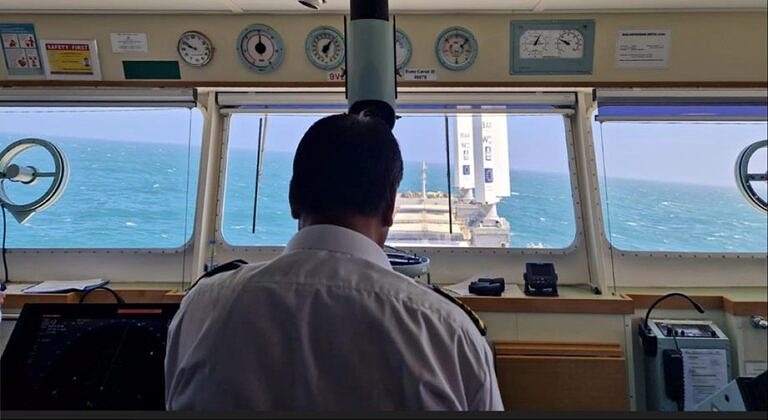Groke Technologies has welcomed the energy saving performance of the world’s first vessel fitted with BAR Technologies’ wind propulsion system WindWings®, which charterer Cargill said has achieved equivalent fuel savings of 3t per day.
In a news release, Cargill Ocean Transportation, one of the world’s foremost freight-trading organisations, said the performance of the two 37.5m WindWings fitted to MC Shipping’s bulker Pyxis Oceanis encouraging.
Juha Rokka, CEO of Groke Technologies, the Finnish company which supplied situational awareness cameras to the vessel, said: “Due to the size of these next generation wind sails, line of sight from the bridge may be affected. Vessels with wind assisted propulsion do need new solutions to ensure they remain SOLAS compliant.”
Groke Technologies’ advanced camera and sensor solutions, approved by classification society DNV, were selected to provide watchkeeping visibility and enhance vessel safety. Installation took place at the COSCO shipyard in China, with Pyxis Oceanmaking her inaugural voyage in August 2023.
A camera system was mounted on the foremast with multiple monitors on the bridge to provide watchkeepers with an unobscured view of the ship and the surrounding area.
BAR Technologies and Cargill estimate an annual average savings of three tonnes of fuel reductions per day (equating to 11.2/t/day CO2e well-to-wake emissions reductions).
“We have been following the vessel closely and supporting the crew along the way,” said Jonas Bergring, Groke Technologies’ Chief Commercial Officer. “The success of this vessel shows the potential of wind assisted propulsion in meeting IMO emissions reduction targets. The situational awareness technology we have developed means they can now also remain navigationally safe and compliant.”
The Finnish company’s Groke Pro system gives watchkeepers an unrivalled view and awareness of the vessel surroundings, combining cameras, Radar and AIS. The pioneering technology gives greater visibility to watchkeepers allowing them to detect any navigational hazards and objects in real time, even during night-time operations or other low-visibility situations such as fog or heavy rain.
Data from sensors and cameras are available via one easy-to-read visual display. The simple-to-install system also includes a risk analysis tool to detect potential collision courses.


